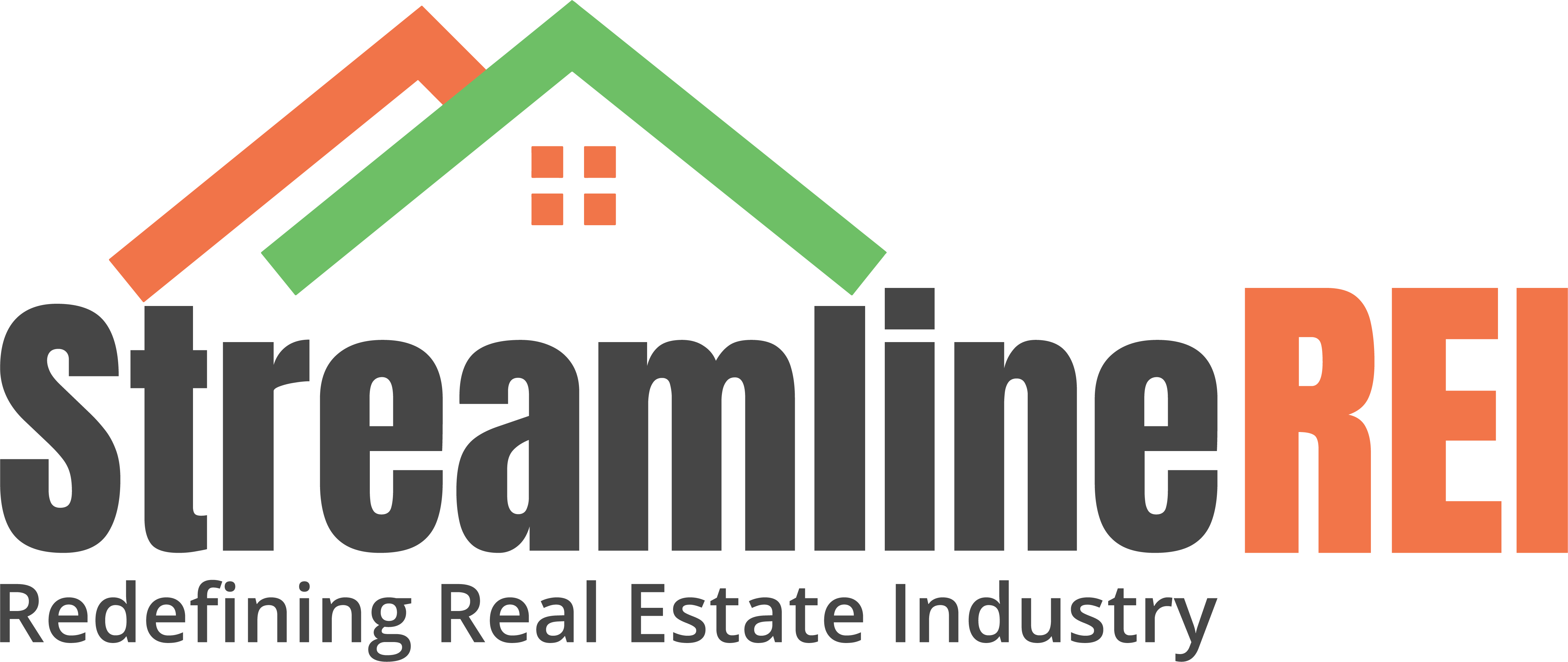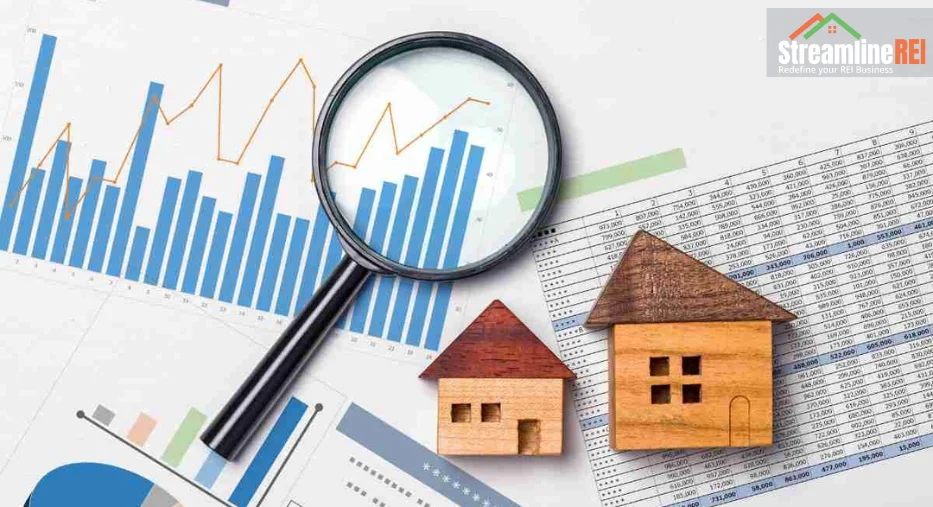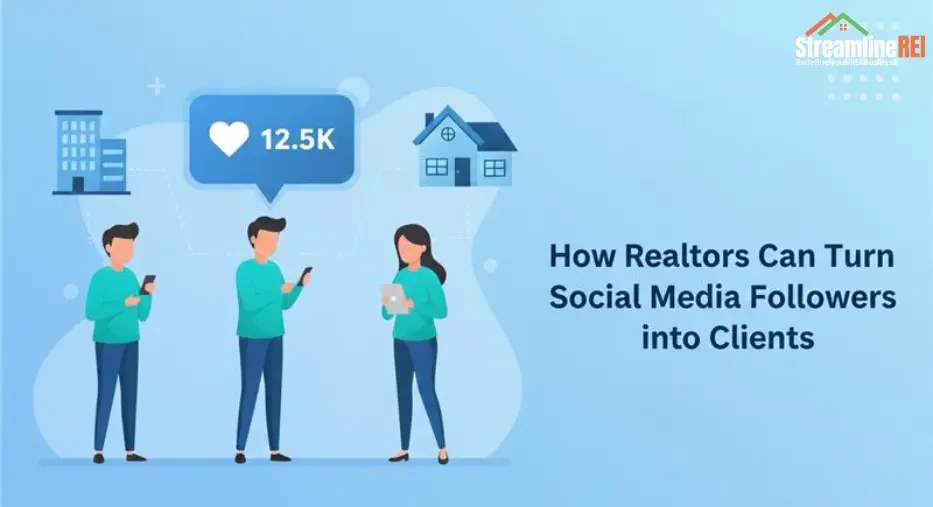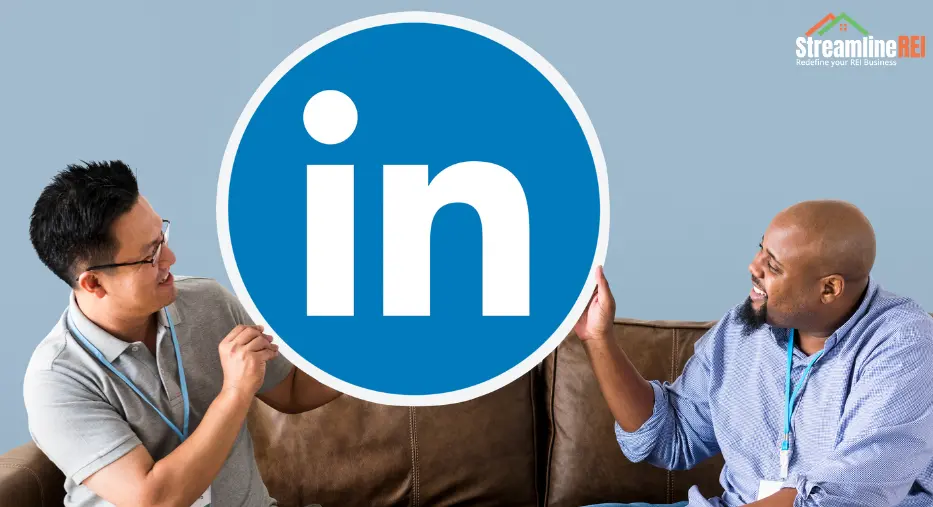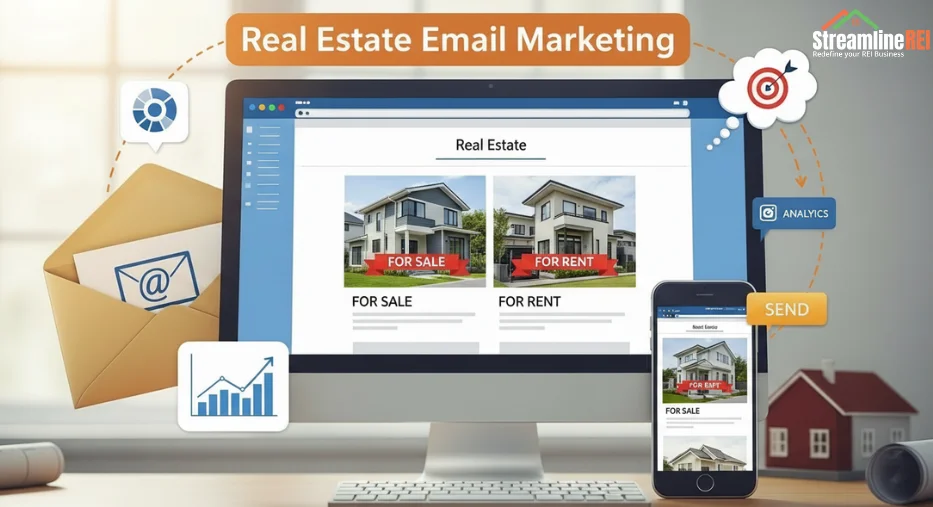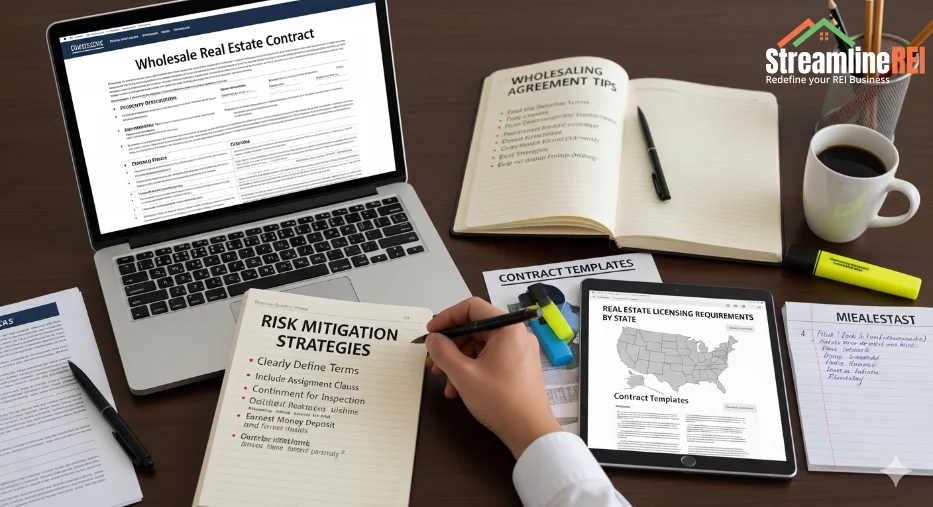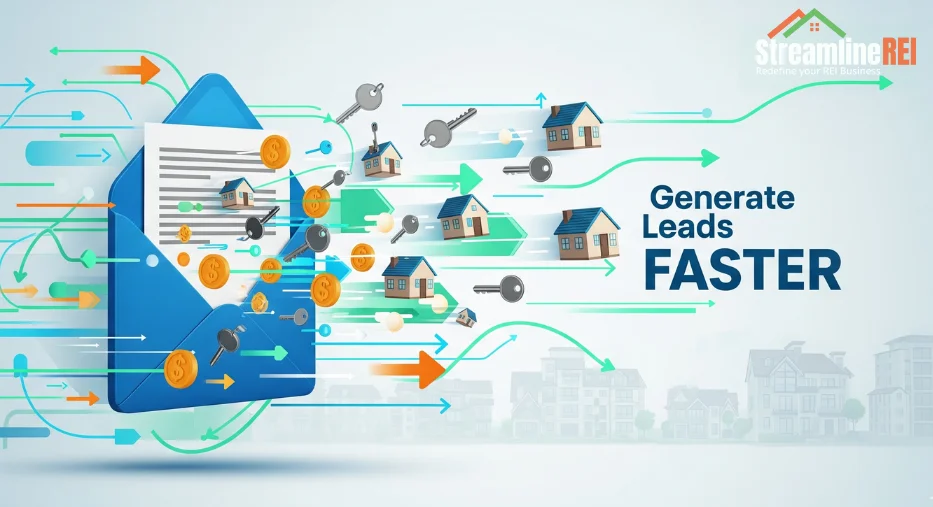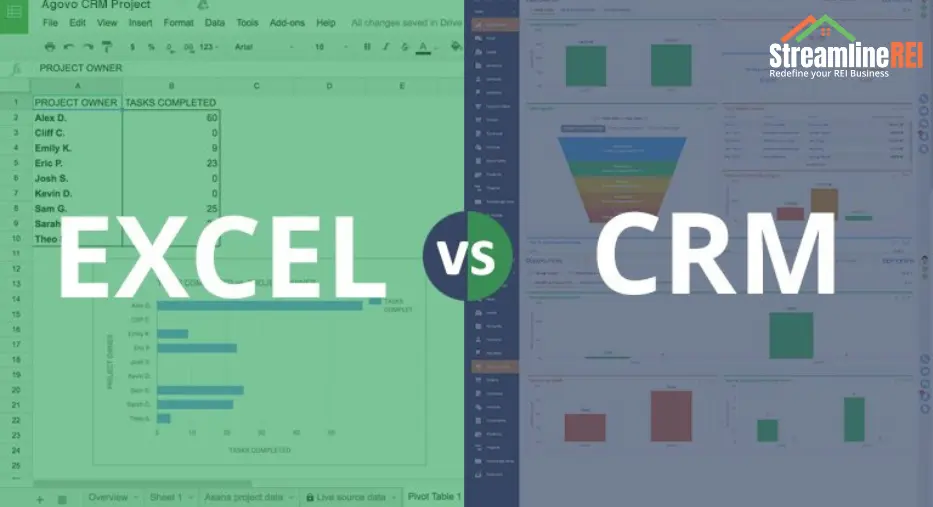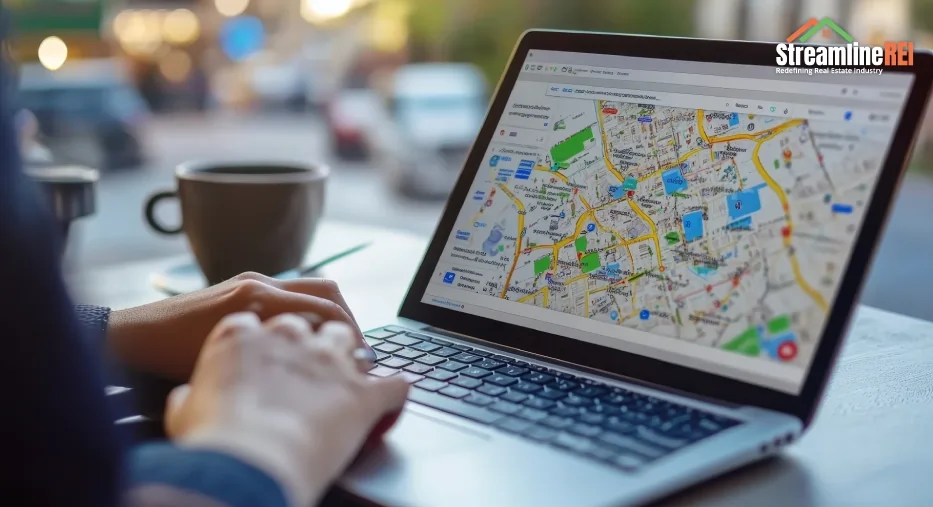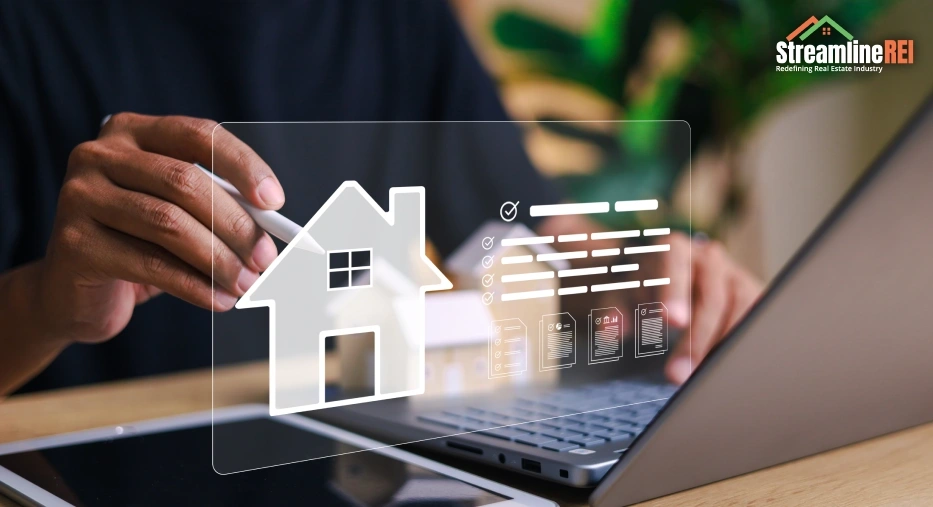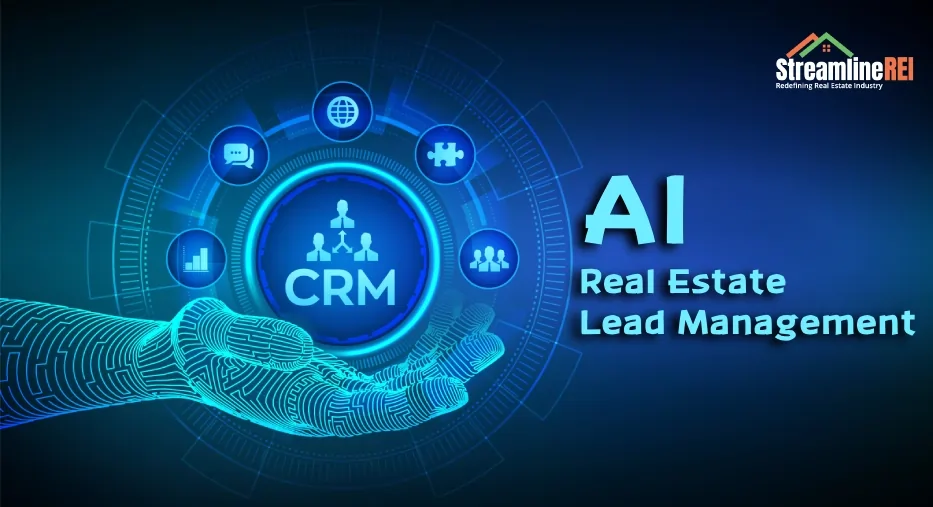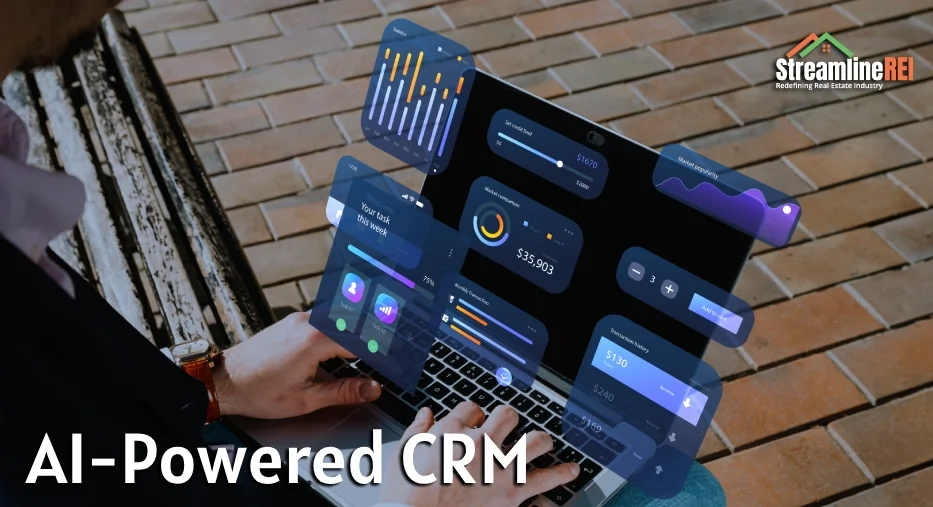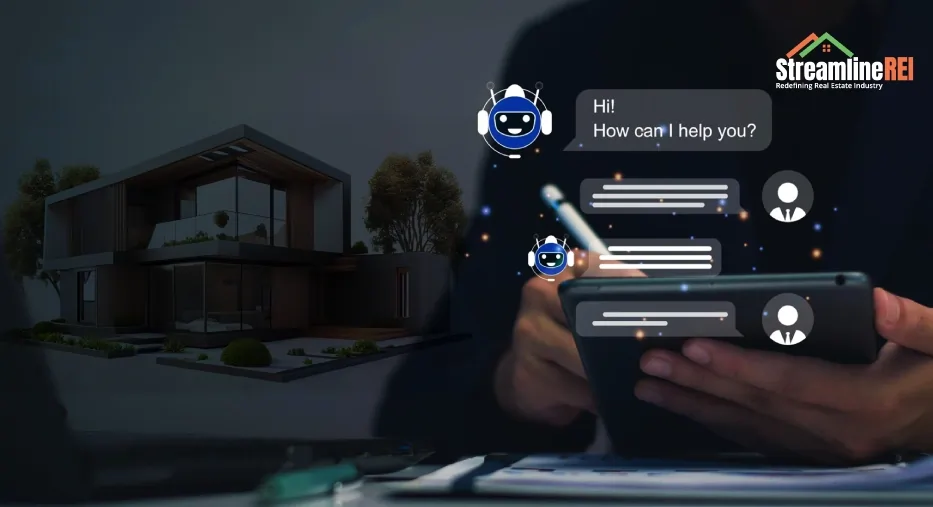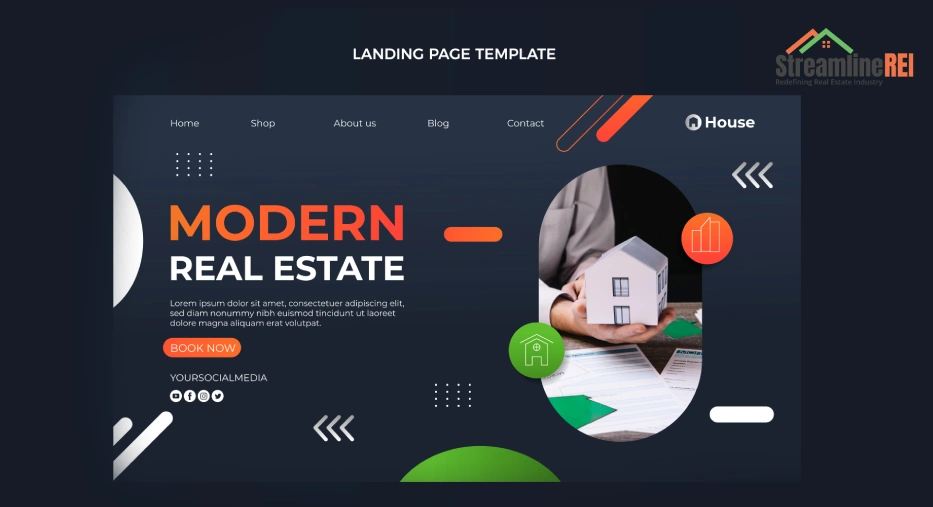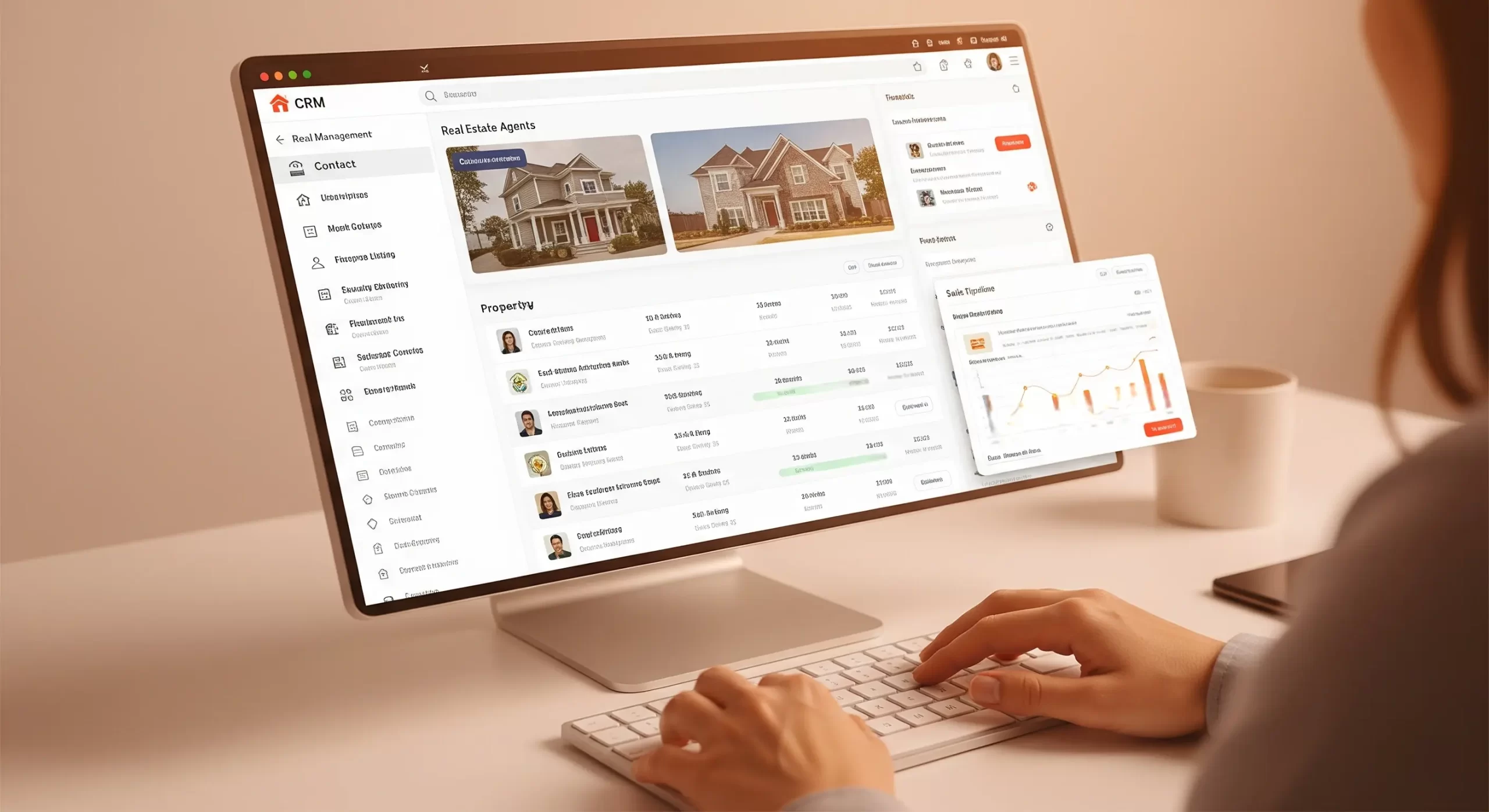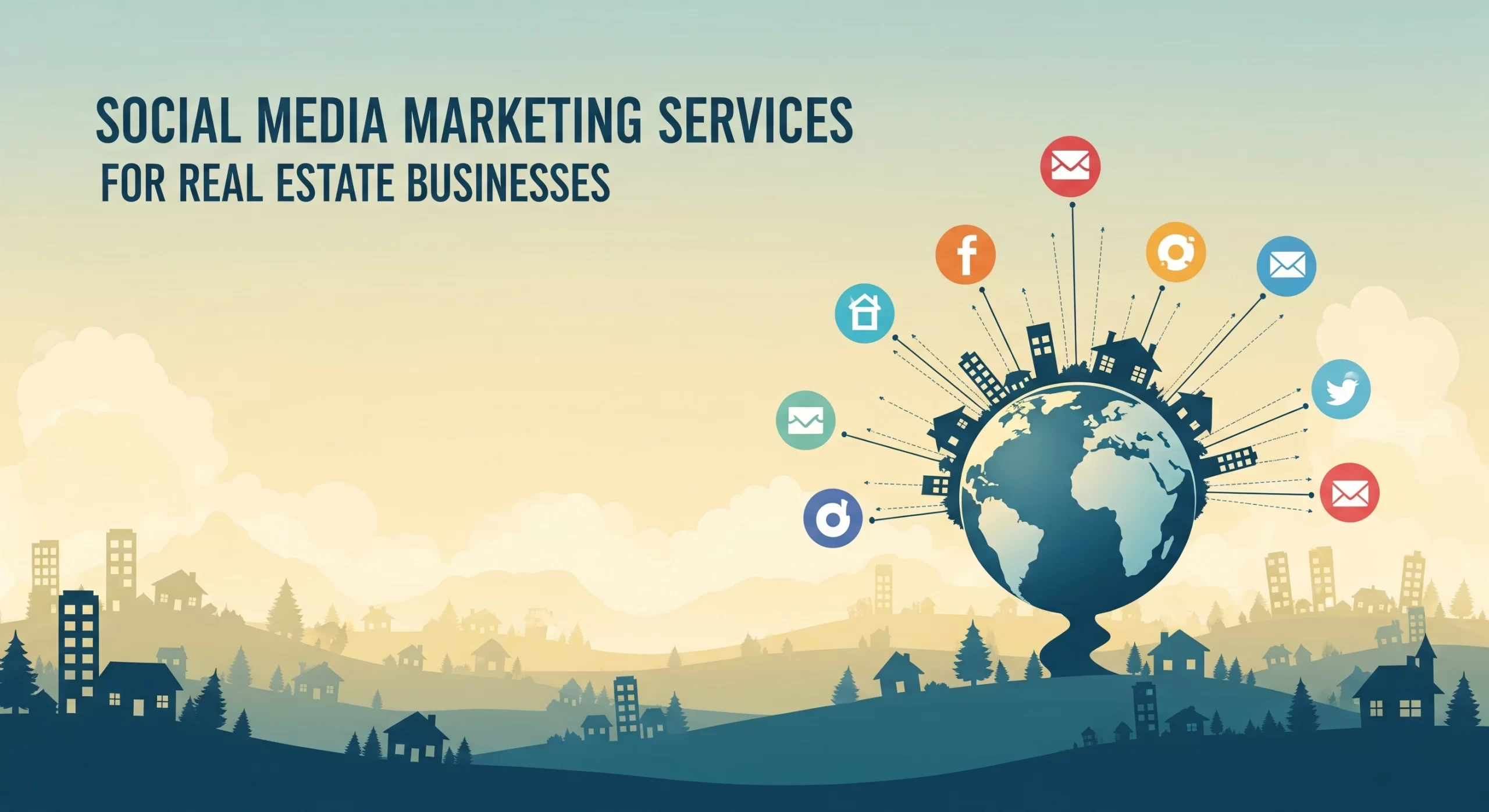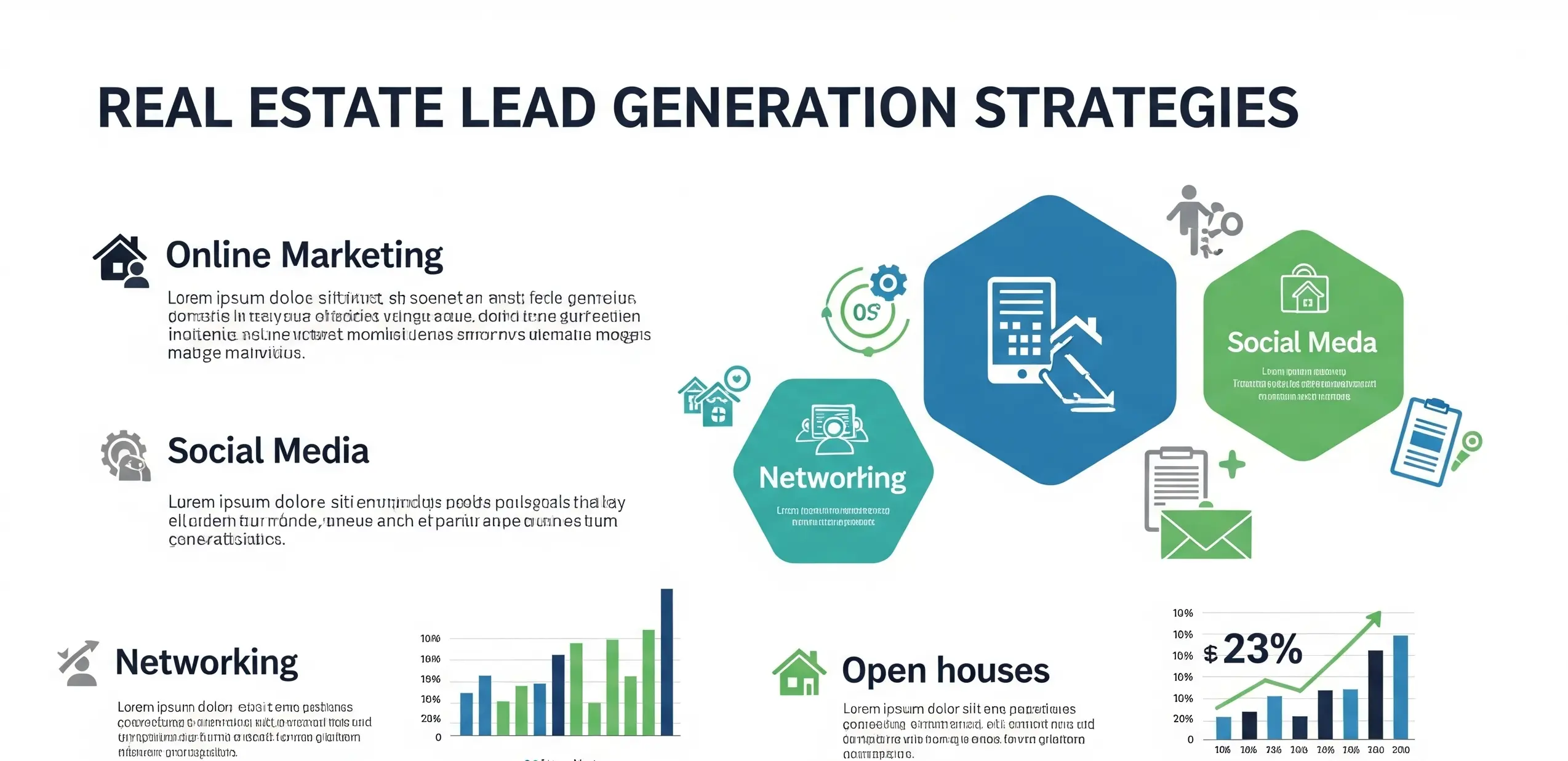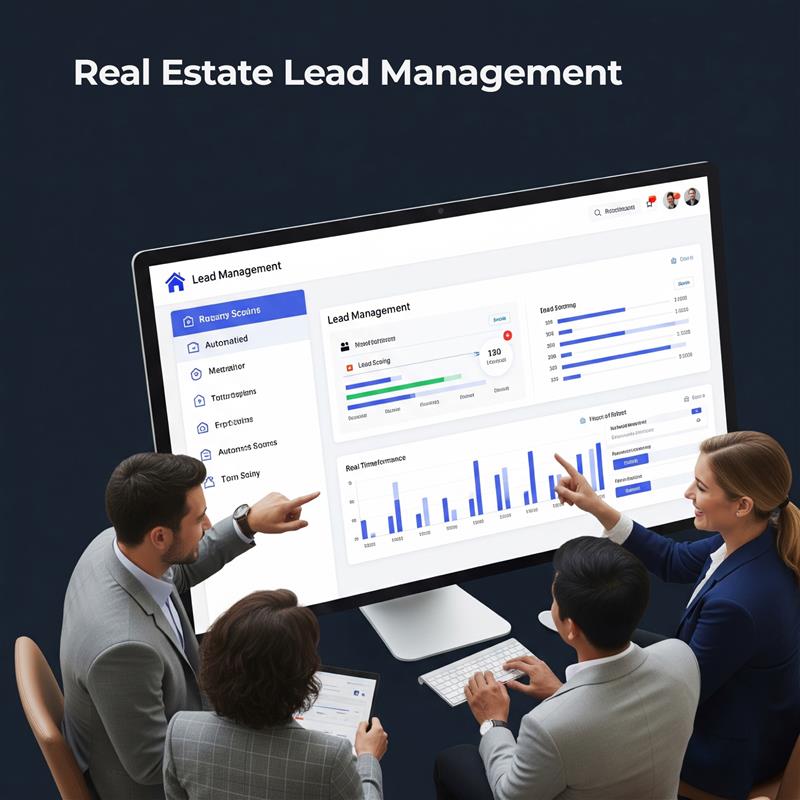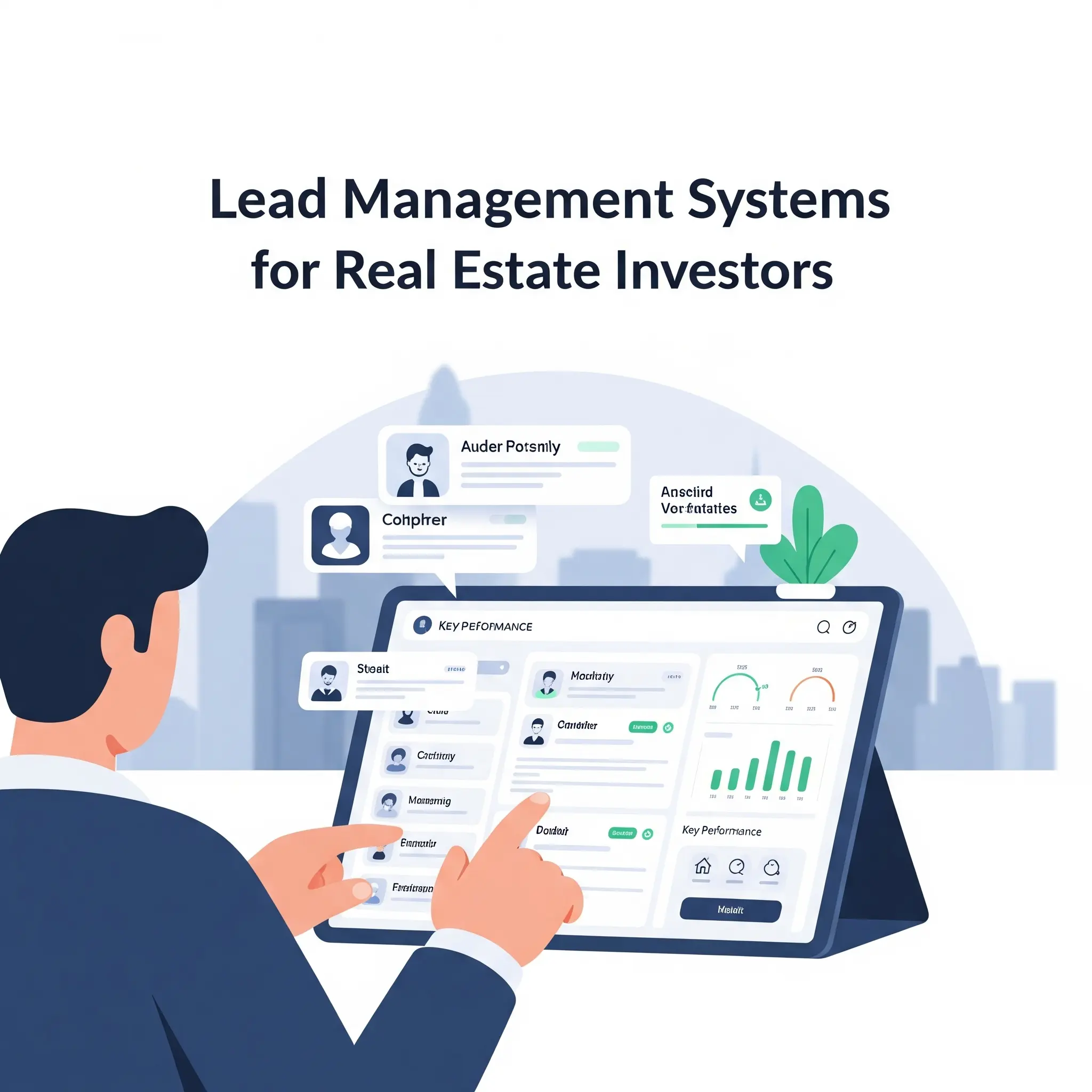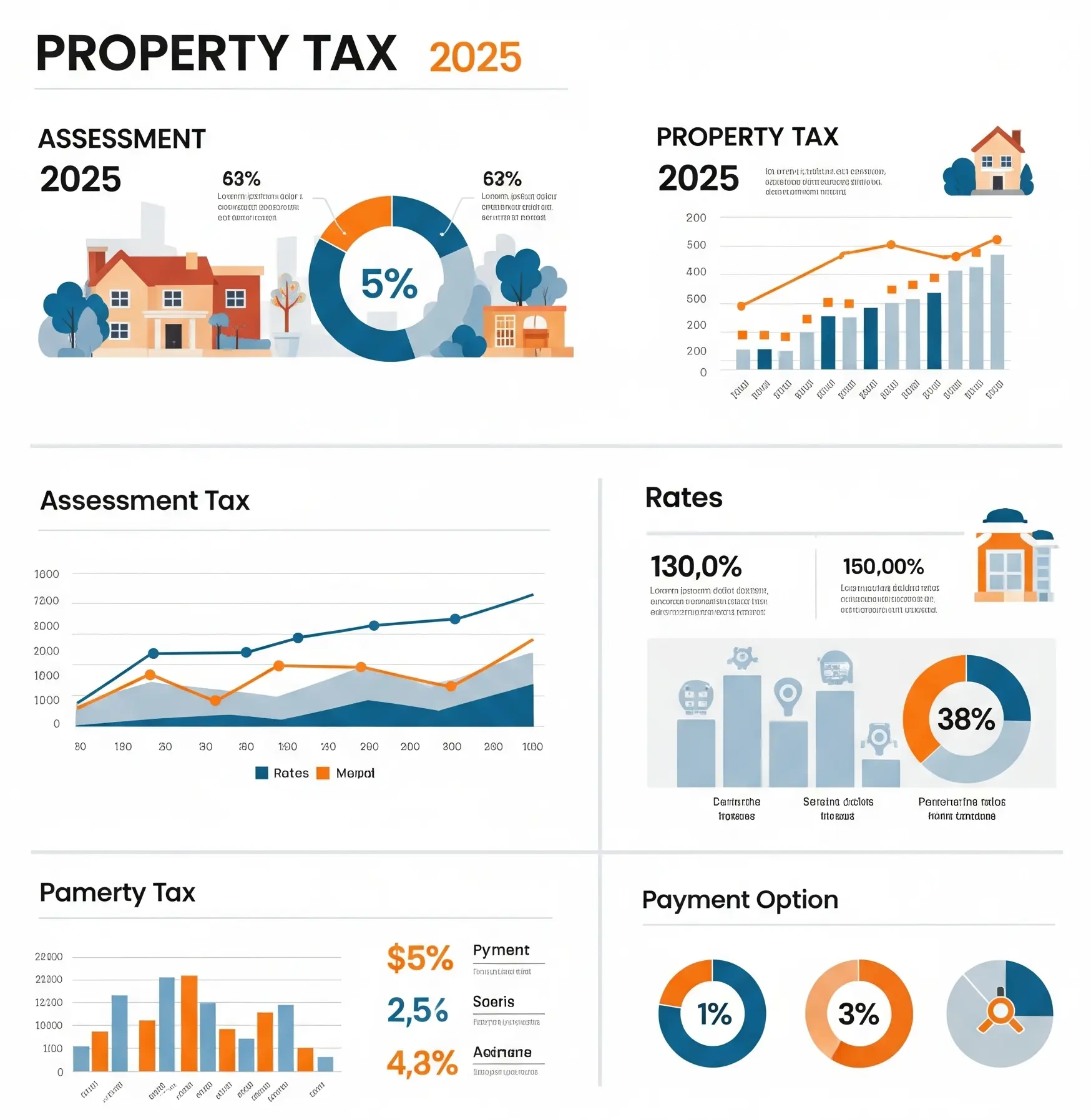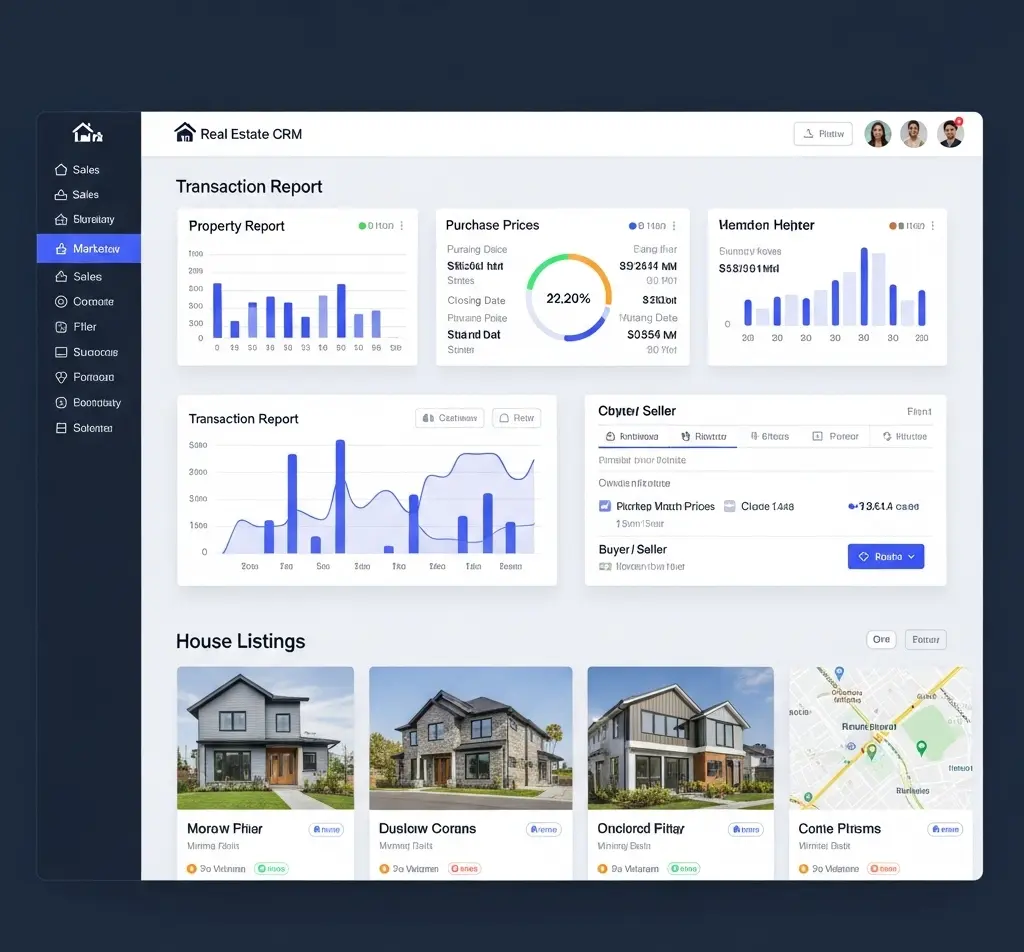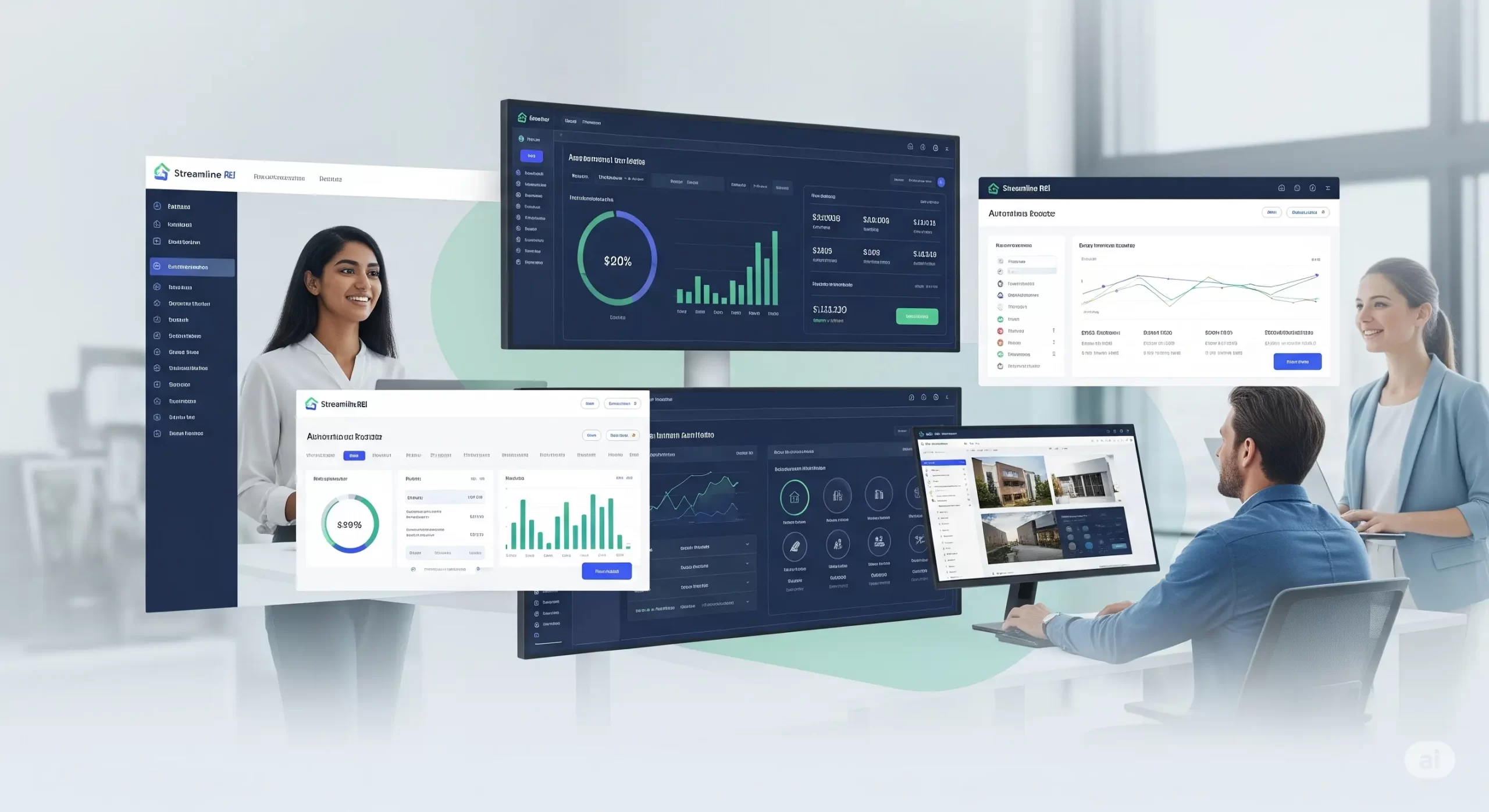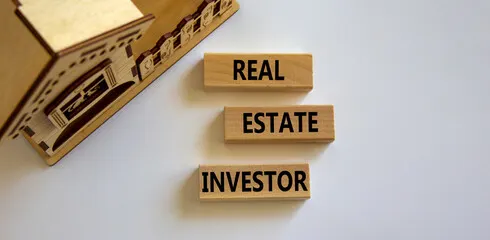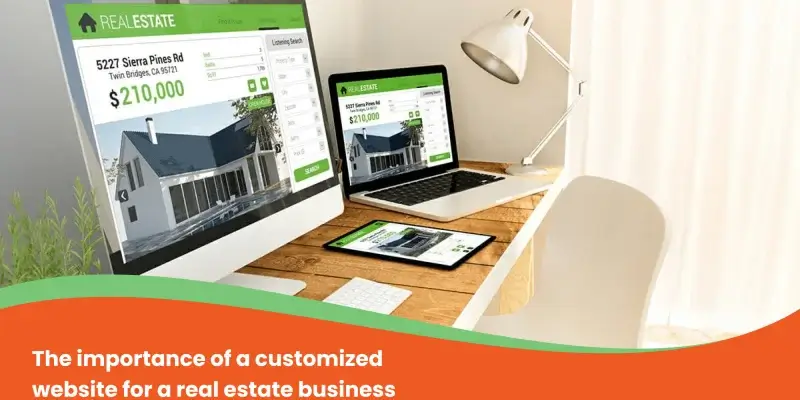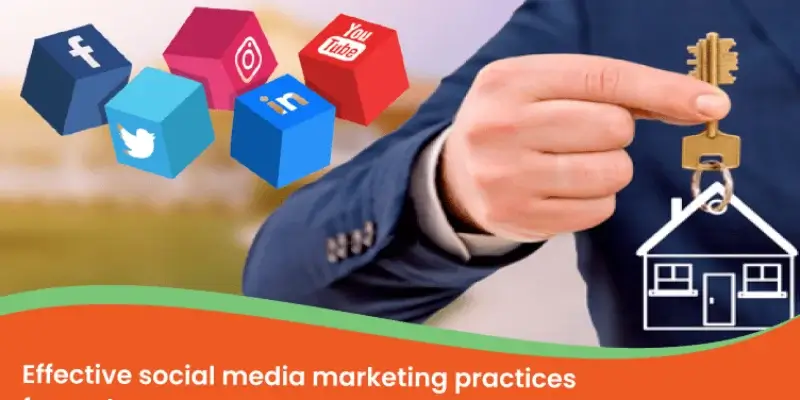News & Blogs
Home/Blogs
The Real Estate Marketing Blueprint You Wish You Had Sooner
- Real Estate Industry
- # May 12, 2025
- # 469 Views

Are you feeling a bit lost with real estate marketing? Does everyone else have a secret map you can’t find? You are not alone because the world of real estate changes fast. There are new ways to reach people who pop up all the time. Keeping up can feel like a full-time job by itself.
But what if there was a clear path? A simple set of steps to follow? That is what a real estate marketing blueprint is all about. It is your guide that shows you exactly where to put your energy and money so you get real results. This helps you stop guessing and start growing.
In this guide, we will break down the most essential parts of real estate marketing. We will cover tips to help you get more people interested in what you offer. Ready to build a strong plan?
Why Having a Clear Plan is Your Secret Weapon
Imagine trying to build a house without a blueprint. It would be messy, and you would waste time and materials. The results may not be according to your expectations. Marketing your real estate business without a plan is much the same.
A real estate marketing blueprint gives you direction and helps you see the big picture. It makes sure every small step you take moves you toward your goals.
Having a plan helps you.
- Save Time: You know what to do next. No more wondering where to start.
- Save Money: You spend on things that work. You avoid costly mistakes.
- Get Better Results: Your efforts are focused. This brings in more leads and clients.
- Stand Out: You look more professional. People trust a clear message.
The market is competitive, and everyone is trying to get noticed. A strong plan helps you cut through the noise.
Step 1: Know Who You Want to Help (Find Your Ideal Client)
This is the most important step. Who do you want to work with? First-time homebuyers? Families needing more space? Are people looking to sell and move somewhere smaller? Real estate investors seeking deals?
Thinking about this matters a lot for real estate marketing. If you try to reach everyone, you reach no one well. When you know your ideal client, you can talk right to them.
Ask yourself simple questions like
- How old are they?
- What do they do for work?
- What do they like to do for fun?
- What are their biggest dreams about a home or investment?
- What are their most significant worries about buying or selling?
Knowing these things helps you choose where to market. It lets you decide what to say and makes your message stronger.
Just imagine a real estate agent who only works with doctors. Their marketing will look different from someone helping college students find rentals. Both can be great, but they need other plans.
Step 2: Build Your Online Home (Your Website and Local Search)
Most people start their property search online. This means your website is super important. It is your 24/7 open house, where people learn about you and see your listings.
Your website needs to be easy to use. Make sure it looks good on phones and computers. People need to find information fast.

What makes a good real estate website?
- Clear Contact Info: Make it easy for people to call or email you.
- Easy Search: Buyers need to search for homes easily.
- Good Photos: High-quality pictures are a must. People love looking at homes.
- Helpful Information: Share tips for buying or selling. Write about your local area.
Online presence is especially important, and this is where search engines like Google and Bing come in. Real estate marketing needs to think about how people search online.
Content is just the information you share online. It could be words, pictures, or videos. For real estate marketing, content helps you show you are the expert and builds trust with people before they even meet you.
What kind of content works for real estate?
- Blog Posts: Write about local schools, parks, market trends, or steps to buying a home. Think about questions your clients often ask. Turn answers into blog posts.
- Videos: Film walk-throughs of properties. Make short videos about neighborhood highlights. Share tips for getting a house ready to sell. Video is very popular.
- Photos: Great photos of listings are needed. But also share pictures of community events or local spots.
- Guides and Checklists: Create simple guides like “First-Time Home Buyer Checklist” or “Tips for Selling Your Home Fast.” People like useful downloads.
These real estate content marketing strategies help you attract visitors to your website. They keep people on your site longer. They show you know your stuff. Sharing valuable content makes you a trusted friend, not just a salesperson.
Step 4: Connect on Social Media (Your Real Estate Social Media Strategy)
Social media is where people spend a lot of time. It is a powerful tool for real estate marketing. You can share listings, but it is also for building relationships.
Think about where your ideal clients spend time
- Facebook: Good for connecting with local community groups. Share listings, market updates, and regional news. Run targeted ads here.
- Instagram: Very visual. Perfect for showing off beautiful homes and neighborhood scenes. Use Stories and Reels.
- LinkedIn: Great for connecting with other professionals. It is also suitable for reaching real estate investors or people moving for work.
- YouTube: Best for longer videos like home tours, market analysis, or Q&A sessions.
Your real estate social media strategy should be about more than just posting listings. Share helpful tips. Ask questions. Answer comments. Be social!
Make your profiles easy to find. Use keywords in your bio. Link back to your website often. The goal is to get people from social media to your online home.
Step 5: Talk Directly (Real Estate Email Marketing Funnel)
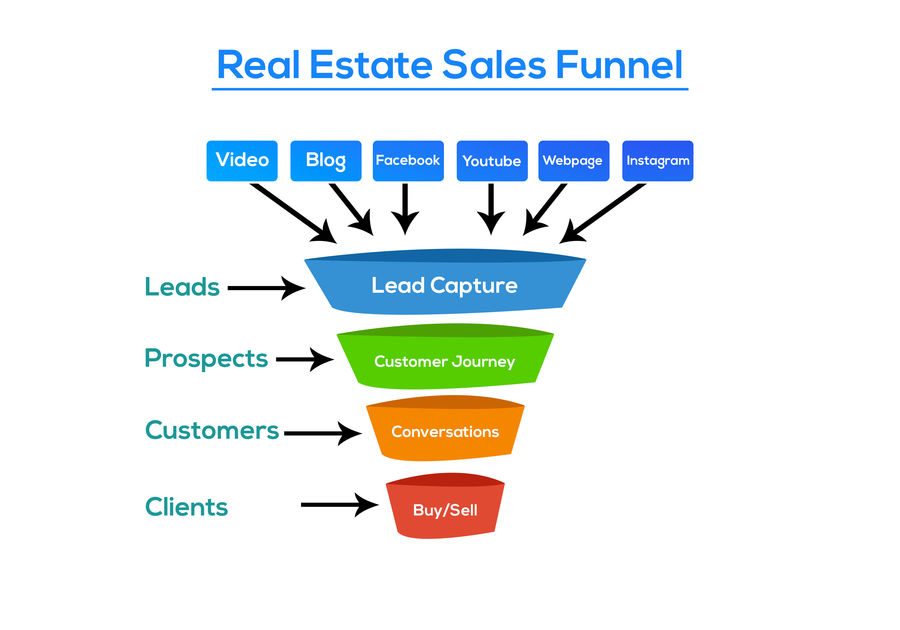
Email might seem old school, but it works. Building an email list is like having a direct line to people interested in real estate.
An email marketing funnel guides people from being slightly interested to becoming a client. It is a series of emails sent over time.
Here is a simple idea of a real estate email marketing funnel
- Awareness: Someone visits your website and signs up for a free guide (like the home buyer checklist).
- Interest: You send them the guide. Then, you send a few emails with helpful tips related to buying or selling. You show your knowledge.
- Consideration: They read your emails and click some links. They start to think you could be the right agent for them. You might send them new listings that match what they are looking for.
- Decision: When they are ready to act, they remember you. They reply to an email or call you.
To make your real estate email marketing funnel work, give people a good reason to sign up. Offer valuable information. Send emails regularly, but not too often. Keep your emails simple and easy to read. Make it clear what you want them to do next (like call you).
Step 6: Get Those Interested People Reaching Out (How to Attract More Leads in Real Estate)
All your marketing efforts lead to this: getting leads. Leads are people who show interest. They might fill out a form, call you, or send you a message.
How to attract more Real estate leads
- Clear Calls to Action (CTAs): On your website, social media, and emails, tell people exactly what to do. “Download the guide,” “Call now,” “View listings.”
- Offer Something Valuable: Give away free info like a neighborhood market report or a guide to selling your home. People give their contact info for something useful.
- Use Landing Pages: Create special pages on your website just for lead capture. These pages focus on one offer (like a free home valuation) and have a simple form.
- Be Responsive: When someone reaches out, reply fast. Speed matters a lot in real estate.
- Networking: Go to local events. Meet people face-to-face. Build relationships in your community. Referrals are still huge!
Getting more leads is the goal of great real estate marketing ideas for agents. It is about being visible and offering real help.
Step 7: Let Computers Do the Repetitive Work (Real Estate Automation Tools)
As your business grows, you do more tasks. Some tasks take up a lot of time but are the same thing over and over. This is where automation helps.
Real estate automation tools use technology to do these tasks for you. This frees up your time to talk to clients and close deals.
Think about things you can automate
- Email Replies: Send an automatic “thank you” email when someone fills out a form.
- Sending Information: Automatically send market updates to people who asked for them.
- Social Media Posts: Schedule your posts ahead of time.
- Lead Follow-up: Set up a series of emails to send to new leads over a few weeks.
A CRM (Customer Relationship Management) system is a key tool here. It helps you keep track of all your contacts and when you last talked to them. Many CRMs have built-in automation features.
Using real estate automation tools means you do not miss follow-ups. It helps you stay in touch consistently. It makes sure no lead falls through the cracks.
Step 8: Build a System That Works Again and Again (Proven Real Estate Marketing Systems)
Instead of doing random marketing tasks, put them together into a system. A system is a set of steps you follow every time. This makes your real estate marketing more effective and easier to manage.
A proven real estate marketing system might include
- Finding a new lead (from your website, social media, or a referral).
- Add them to your CRM.
- Sending them an automated welcome email.
- Following up with a phone call or text message.
- Adding them to an email list based on their interests (buyer, seller, investor).
- Sending them relevant content over time.
- Tracking when they open emails or visit your website.
- Reaching out personally when they show high interest.
Having proven real estate marketing systems means you have a clear process for turning a stranger into a client. You can test what works best and make improvements. This makes your marketing predictable and strong.
Step 9: Marketing for People Who Buy and Sell for Profit (Digital Marketing for Real Estate Investors)
Digital marketing for real estate investors has some unique points. Investors often look for different things than someone buying a home to live in.

Investors may focus on
- Finding properties below market value.
- Understanding rental income potential.
- Knowing about local market trends for investing.
- Connecting with other investors or partners.
Your digital marketing for investors should speak to these needs.
- Content: Write blogs about analyzing deals, financing options, or tips for managing rental properties. Share case studies of successful investments.
- Lead Capture: Offer guides on “Finding Investment Properties” or “Analyzing a Rental Deal.”
- Social media: LinkedIn can be great for connecting with other investors. Facebook groups for local real estate investing are also valuable.
- Website: Have sections on your site specifically for investors. List properties that might be worthwhile investment opportunities.
Whether you help people find homes or find deals, the core ideas of knowing your audience and providing value are the same. Digital marketing for real estate investors requires tailoring your message.
Step 10: Making Your Marketing Campaigns Work Hard (High-Converting Real Estate Campaigns)
You want your marketing efforts to lead to action. That is what a high-converting campaign does. It turns someone seeing your ad or posting it into someone contacting you.
Tips for high-converting real estate campaigns
- Clear Goal: What do you want people to do? Call you? Visit a listing page? Download a guide? Make this super clear.
- Simple Message: Do not confuse people with too much text. Get straight to the point.
- Strong Offer: Why should they click or call now? What problem do you solve for them?
- Easy Next Step: Make it simple for them to act. A clear button, a phone number that is easy to see.
- Target the Right People: Show your message only to those most likely to be interested (this is where knowing your ideal client helps a lot).
Whether it is a Facebook ad showing a new listing or an email inviting them to an open house, these ideas make your high-converting real estate campaigns more successful. Test different messages and offers to see what works best for your audience.
Look for tools that help you build dedicated pages for these campaigns. These landing pages are designed to get people to take one specific action.
When you are ready to build a robust online presence and streamline your operations, investigate the tools and resources that can help you execute this blueprint.
Putting Your Blueprint into Action
Building your real estate marketing blueprint takes time and effort. You do not have to do everything at once. Start with one or two areas. Maybe focus on your website first. Then, add a social media plan and set up a simple email follow-up.
Consistency is more important than doing everything perfectly from day one. Keep learning. Watch what works for others. Try new things.
Measure your results. See which efforts bring in the most leads and clients. Do more of what works. Change what does not.
The world of real estate marketing keeps moving. Stay curious and adaptable. Your blueprint will grow with you.
To truly scale your real estate business and implement these strategies efficiently, consider the systems available at StreamlineREI.
Conclusion
You now have the parts needed to build your real estate marketing blueprint. It is about knowing who you serve, creating a strong online home, sharing helpful information, connecting with people where they are, and using tools to work smarter.
Putting this blueprint into practice will help you attract more leads, build lasting relationships, and grow a successful real estate business. This is the plan you need to move forward with confidence.
Discover how StreamlineREI can provide the tools and support you need to put this marketing blueprint into action and achieve your business goals.
Frequently Asked Questions
What is the most essential part of real estate marketing today?
The most important part is being where your clients are looking. Today, that means having a strong online presence. Your website and social media are key. Sharing helpful content is also particularly important.
Do I really need a website if I use social media a lot?
Yes, a website is still essential. Social media platforms can change. Your website is your own space online. It is where you can share all your listings and information. It looks more professional. It is a big place for people to find out everything about you.
What is SEO, and why does it matter for real estate?
SEO stands for Search Engine Optimization. It is about making your website easy for search engines like Google to find and understand. When someone searches for homes in your area, you want your website to show up high in the results. Good SEO brings more visitors to your site who are looking to buy or sell.
How often should I contact people on my email list?
There is no perfect rule. A clever idea is to do once or twice a week. Send them helpful information, not just sales pitches. Share new listings, market updates, or tips for homeowners. Be consistent, but do not flood their inbox. Make every email valuable.
What kind of “content” should a real estate investor create?
Investors can create content about finding deals, how to analyze properties, information about local investment areas, or tips for being a landlord. Sharing your knowledge attracts other investors or people who might sell you a property.
What is CRM, and why do real estate agents use it?
CRM is a Customer Relationship Management system. It is software that helps agents keep track of all their contacts (past clients, current leads, and potential future clients). It enables you to remember who you talked to, what you talked about, and when to follow up. It is key for staying organized and building relationships as your business grows.


